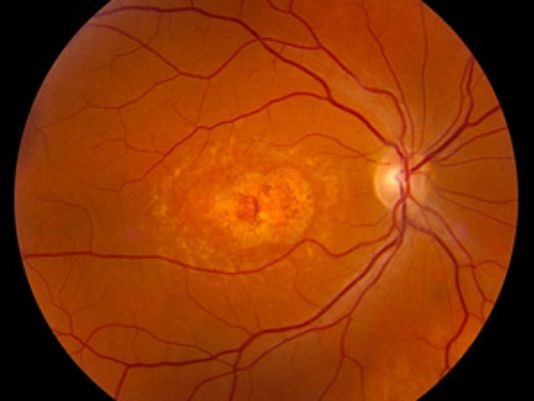Playing Go is not enough for Google to diagnose eye diseases with artificial intelligence.

Human eye scan image
Google has signed an agreement with a British eye hospital to use artificial intelligence technology to learn the medical records of 1.6 million patients in the hospital .
The goal is to teach computer software to recognize signals from two common eye diseases. These two diseases are diabetic retinopathy and age-related macular degeneration.
At present, the effect of artificial diagnosis of these diseases is not perfect. Doctors generally obtain medical conclusions by analyzing medical images and inquiring patients. The rate of misdiagnosis usually reaches 10% to 20%.
Artificial intelligence allows computers to scan millions of records and files, learn from them, and then make more accurate diagnoses and save a lot of time.
Google announced the partnership on Monday, with partners in the company's artificial intelligence company DeepMind and London's Moorfields Eye Hospital.
Peng Tee Khaw, head of the Biomedical Research Center at the National Institutes of Health at the Moorfields Eye Hospital, said: "The total number of visually impaired people is expected to double by 2050, so it's important to explore how to use advanced technology to prevent eye diseases."
Age-related macular degeneration and diabetic retinopathy currently affect more than 100 million people worldwide. Among the working-age population, diabetes is the leading cause of blindness. Early detection and early treatment can avoid 99% of serious visual impairment caused by diabetes.
Mustafa Suleyman, co-founder of DeepMind and director of applied artificial intelligence, said medical health technology still relies on paper documents, paging systems and fax machines. He hopes that DeepMind will bring more powerful technology. Suleiman said on the blog platform Medium: "We hope to bring a difference in this area."
This is the second collaboration between DeepMind and the National Health Service (NHS). Previous projects used smartphone apps to monitor kidney function in patients at Royal Free Hospital in London.
Such cooperation has also caused some controversy. This spring, the scientific journal New Scientist reported that the data sharing agreement between DeepMind and the Royal Free NHS Trust enabled the company to obtain personal medical information from 1.6 million patients in London hospitals without the patient's consent.
Google responded by saying that the company needed to obtain data from all patients in the system because it was impossible to get information about patients with kidney disease. Suleiman also said that DeepMind operates independently of Google and that patient data is not linked to any Google account, product or service.
DeepMind's artificial intelligence go system AlphaGo defeated world champion Li Shishi earlier this year. This system analyzes millions of chess games and practices millions of chess games.
Urinalysis test strips refer to test strips that test for bilirubin, urobilinogen, ketone bodies, ascorbic acid, glucose, protein (albumin), blood cells, PH, etc. in urine.
Detection principle
1. pH: The pH value in the range of 5-9 is measured by the pH indicator, and the pH value of the fresh urine of a normal person is between 5-7.
2. Nitrite: The reaction is based on the reduction of nitrate to nitrite by Gram-positive bacteria in the urine. The nitrite reacts with p-aminobenzenesulfonic acid to form diazonium compounds, which are then combined with N-(1-naphthalene) )-3 aminopropanesulfonate combined with a pink color.
3. Glucose: According to the reaction principle of glucose oxidase, glucose oxidase specifically oxidizes glucose to generate glucuronic acid and hydrogen peroxide. Under the action of hydrogen peroxide, hydrogen peroxide oxidizes the indicator and turns color. .
Classification
Urinalysis test strips are divided into visual series and machine series. The visual inspection series is divided into several models according to different inspection items; the machine inspection series is divided into several models according to different applicable instruments.
1. Classification by measurement method
1) Visual inspection series
When observing the result, compare the color with the standard color code within the time specified on the color code, judge and read the result.
2) Machine test series.
For instrument operation, refer to the instruction manual of the Urine Analyzer used.
2. According to the number of measurement items
There are single-item, 2-item, 4-item and multiple test strips. Currently, 10-item or 11-item multiple test strips are most commonly used in hospitals.
3. Classification by structure
Urinalysis test strips with single-layer membrane structure and multi-layer membrane structure.
Urine Reagent Strips,Urine Test Strip,Urine Sugar Strip Test,Visual Urine Analysis Strips
Jilin Sinoscience Technology Co. LTD , https://www.jlgkscience.com